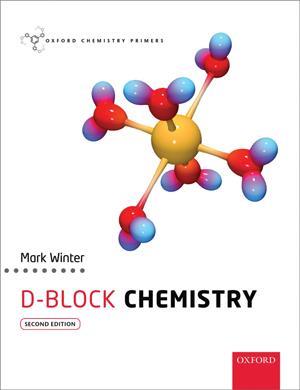D-block decoded
Mark Winter
Oxford University Press
2015 | 144pp | £19.99
ISBN 9780198700968

The d-block elements and their complexes – or, if the Iupac recommendation is to be observed, ‘entities’ – can bewilder undergraduates with their multiple oxidation states, geometries, valence electron counts and ligands.
Mark Winter’s D-block chemistry, originally published as part of the Oxford chemistry primer series in 1995, and now revised and updated, is a good and approachable introduction to put this bewilderment in context. Books in this series are intended to give concise but accessible accounts of important topics, and, in this respect, Winter succeeds. The layout is well-designed, with the main flow of text and figures occupying the inner two-thirds of each page, and illustrations or further explanatory notes placed alongside in an outer column. Colour is not used in diagrams – presumably to help keep costs down – but it is not necessary when the two-tone shading is as effective as it is here.
After a brief introduction to the elements and an appetite-whetting description of their importance in nature, Winter takes a historical approach to the subject. Following an outline of complex discovery and the work of Alfred Werner is an account of ligands and complex formation in solution. Shapes of complexes, isomerism and concepts of oxidation number and electronic configuration are discussed, along with the covalent bond classification concept. Crystal field theory, followed by more covalent bonding models, is also covered. No particular distinction between ‘classical’ and organometallic complexes is made in this section, which culminates in the 18-electron rule and metal–metal bonded complexes. Finally, in a chapter entitled ‘Consequences of d-orbital splitting’, some simple concepts of electronic spectra and magnetism of d-metal complexes are explained, before a brief summary, almost an appendix, outlining nomenclature rules is given.
The level is appropriate for an introductory course as little to no prior knowledge is assumed, although any course dealing with d-element spectroscopy or magnetism beyond the one-electron model would require a more advanced book. An incentive for purchasing this text, perhaps, is that RSC members can get 25% off the price of these primers.
Purchase D-block chemistry from Amazon.co.uk












No comments yet